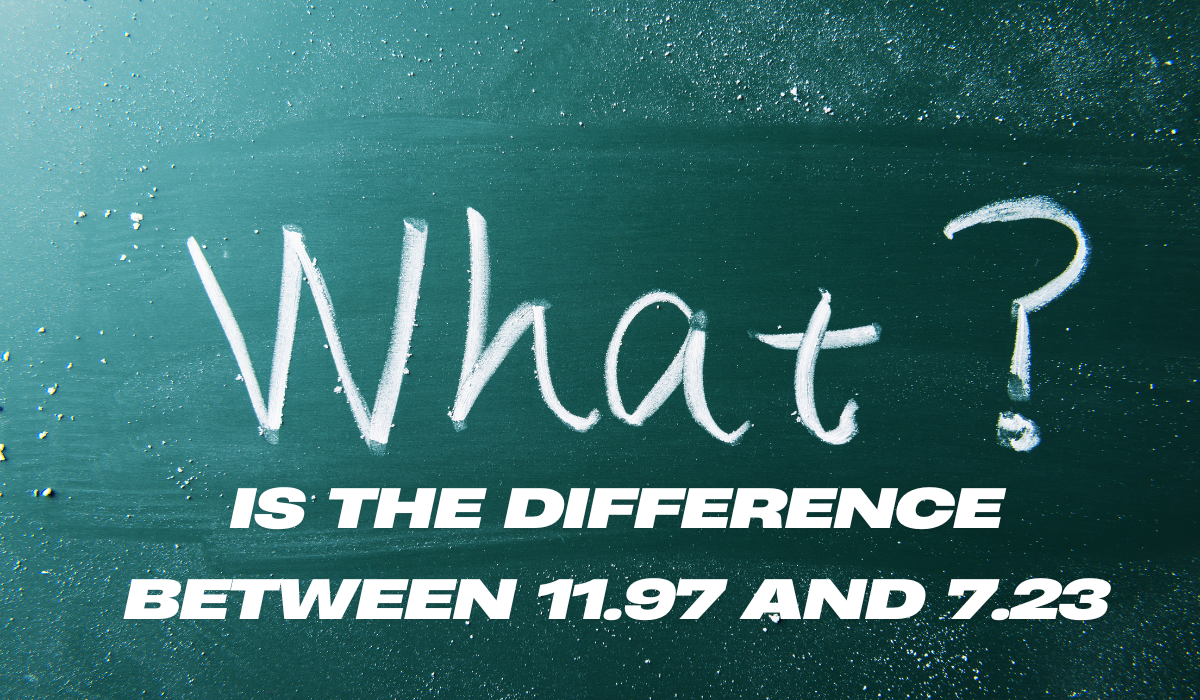Mathematics often plays a role in our daily lives, whether we’re balancing a budget, measuring ingredients for a recipe, or analyzing data. One of the simplest yet most fundamental operations is subtraction. In this article, we’ll explore the difference between the numbers 11.97 and 7.23 to understand the mathematical process and its practical applications.
The Basics of Subtraction
Subtraction is the mathematical process of determining the difference between two numbers. It’s one of the four basic arithmetic operations and is used to determine how much larger one number is compared to another. The formula for subtraction looks like this:Difference=Minuend−Subtrahend\text{Difference} = \text{Minuend} – \text{Subtrahend}Difference=Minuend−Subtrahend
Where:
- The minuend is the number from which we subtract.
- The subtrahend is the number being subtracted.
In the case of 11.97 and 7.23, the minuend is 11.97, and the subtrahend is 7.23. Performing the subtraction:11.97−7.23=4.7411.97 – 7.23 = 4.7411.97−7.23=4.74
The difference between 11.97 and 7.23 is 4.74, which means that 11.97 is 4.74 units greater than 7.23.
Why Is the Difference Important?
The difference between the two numbers can reveal helpful information depending on the context. Let’s look at a few scenarios where calculating differences might be relevant.
1. Budgeting and Finance
Understanding the differences between values is crucial in personal finance or budgeting. For example, if you have $11.97 in your account and need to make a purchase of $7.23, knowing the difference helps you understand how much money will remain after the purchase. The difference of $4.74 means you’ll have $4.74 left to cover other expenses or save for later.
2. Time and Scheduling
When planning events or tasks, the difference between the two times can help you schedule effectively. If an event ends at 11.97 hours (say 11:58 AM) and another starts at 7.23 hours (7:14 AM), you might want to know the time gap between them. In this case, the difference of 4.74 hours can give you enough information to determine how much time you have to prepare between the two activities.
3. Measurement and Science
Precision is critical in fields like science or engineering, and understanding the difference between two measurements is often a key part of an analysis. For example, imagine you’re measuring the length of two objects: one is 11.97 cm long, and the other is 7.23 cm long. The difference of 4.74 cm would help you understand the size disparity, which could be crucial depending on the experiment or design you’re working on.
Dealing with Decimals
11.97 and 7.23 are decimal numbers, meaning they have fractional parts. Subtracting decimals is similar to subtracting whole numbers but requires careful alignment of the decimal points.
Here’s a breakdown of the subtraction process:
- Align the decimals: Place the numbers one under the other, making sure the decimal points are aligned. Copy
11.97
- 7.23Copy
- Subtract each column starting from the rightmost digit, just as you would with whole numbers. If you need to borrow, do so appropriately, keeping the decimal point in place.
- The result is 4.74, as calculated.
Understanding how to handle decimals is essential, especially in real-world applications such as finance, engineering, and computing, where precision is often necessary.
Practical Applications of Differences
- Cost Analysis: Imagine two products priced at $11.97 and $7.23. The difference between these prices, $4.74, can help you determine how much more expensive one product is compared to the other, which can influence purchasing decisions.
- Distance and Travel: In travel scenarios, subtracting distances helps you calculate how much farther you must go. For instance, if you are on a trip and the total distance is 11.97 kilometers, but you’ve already traveled 7.23 kilometers, the difference of 4.74 kilometers represents how far you have left to reach your destination.
- Weight Loss or Gain: If someone is tracking their weight loss and starts at 11.97 kg and reaches 7.23 kg, the difference of 4.74 kg indicates how much weight they have lost.
Conclusion: What is the Difference Between 11.97 and 7.23
While 11.97 and 7.23 may seem like simple numbers, the difference between them—4.74—can have various implications in both theoretical and practical scenarios. Whether managing your finances, scheduling your time, or working with measurements, understanding how to calculate and interpret differences is a skill that serves us well in numerous real-life contexts. So, next time you encounter a subtraction problem, remember that even the most straightforward differences can provide valuable insights.

